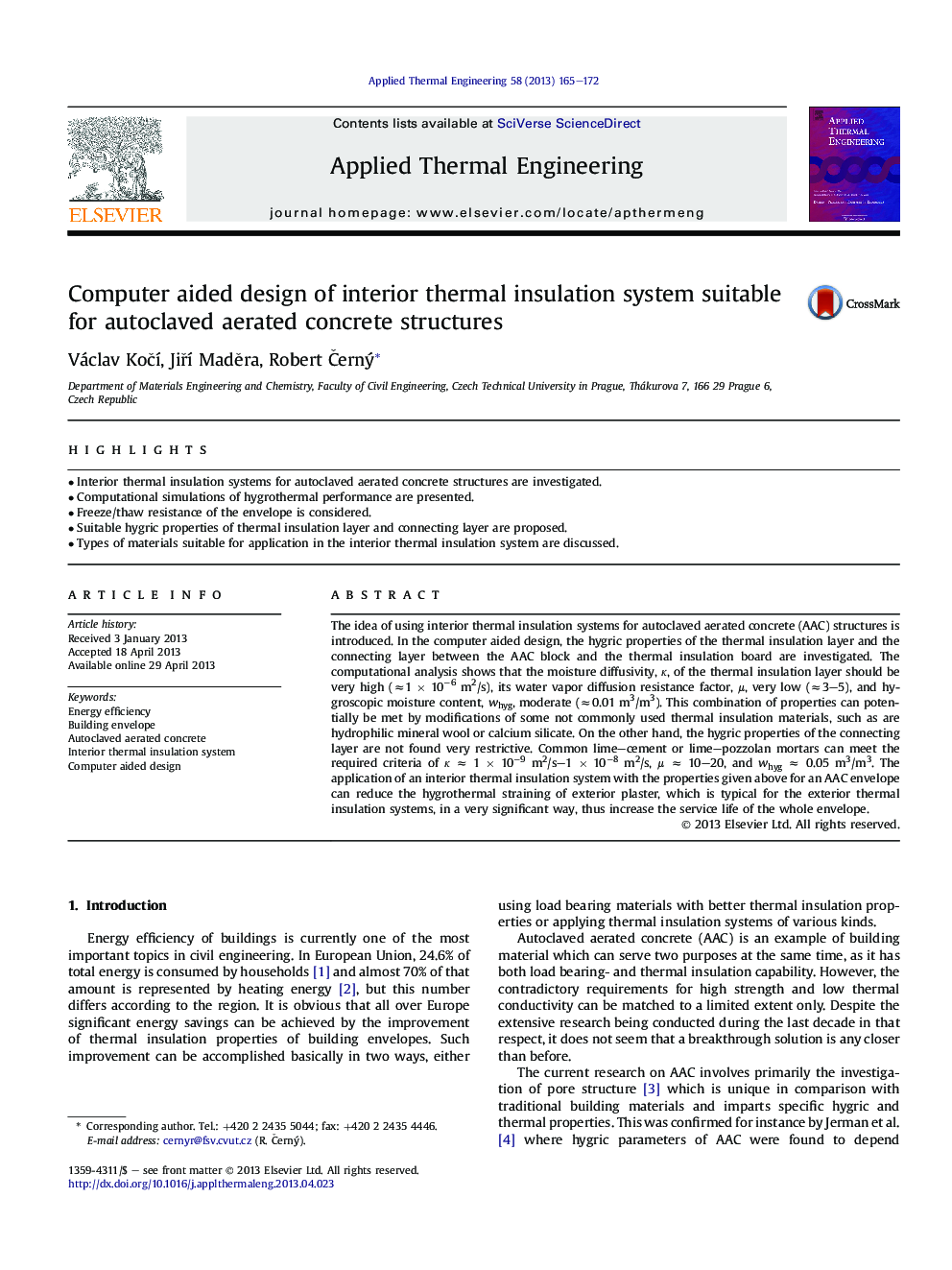| Article ID | Journal | Published Year | Pages | File Type |
|---|---|---|---|---|
| 646795 | Applied Thermal Engineering | 2013 | 8 Pages |
•Interior thermal insulation systems for autoclaved aerated concrete structures are investigated.•Computational simulations of hygrothermal performance are presented.•Freeze/thaw resistance of the envelope is considered.•Suitable hygric properties of thermal insulation layer and connecting layer are proposed.•Types of materials suitable for application in the interior thermal insulation system are discussed.
The idea of using interior thermal insulation systems for autoclaved aerated concrete (AAC) structures is introduced. In the computer aided design, the hygric properties of the thermal insulation layer and the connecting layer between the AAC block and the thermal insulation board are investigated. The computational analysis shows that the moisture diffusivity, κ, of the thermal insulation layer should be very high (≈1 × 10−6 m2/s), its water vapor diffusion resistance factor, μ, very low (≈3–5), and hygroscopic moisture content, whyg, moderate (≈0.01 m3/m3). This combination of properties can potentially be met by modifications of some not commonly used thermal insulation materials, such as are hydrophilic mineral wool or calcium silicate. On the other hand, the hygric properties of the connecting layer are not found very restrictive. Common lime–cement or lime–pozzolan mortars can meet the required criteria of κ ≈ 1 × 10−9 m2/s–1 × 10−8 m2/s, μ ≈ 10–20, and whyg ≈ 0.05 m3/m3. The application of an interior thermal insulation system with the properties given above for an AAC envelope can reduce the hygrothermal straining of exterior plaster, which is typical for the exterior thermal insulation systems, in a very significant way, thus increase the service life of the whole envelope.
